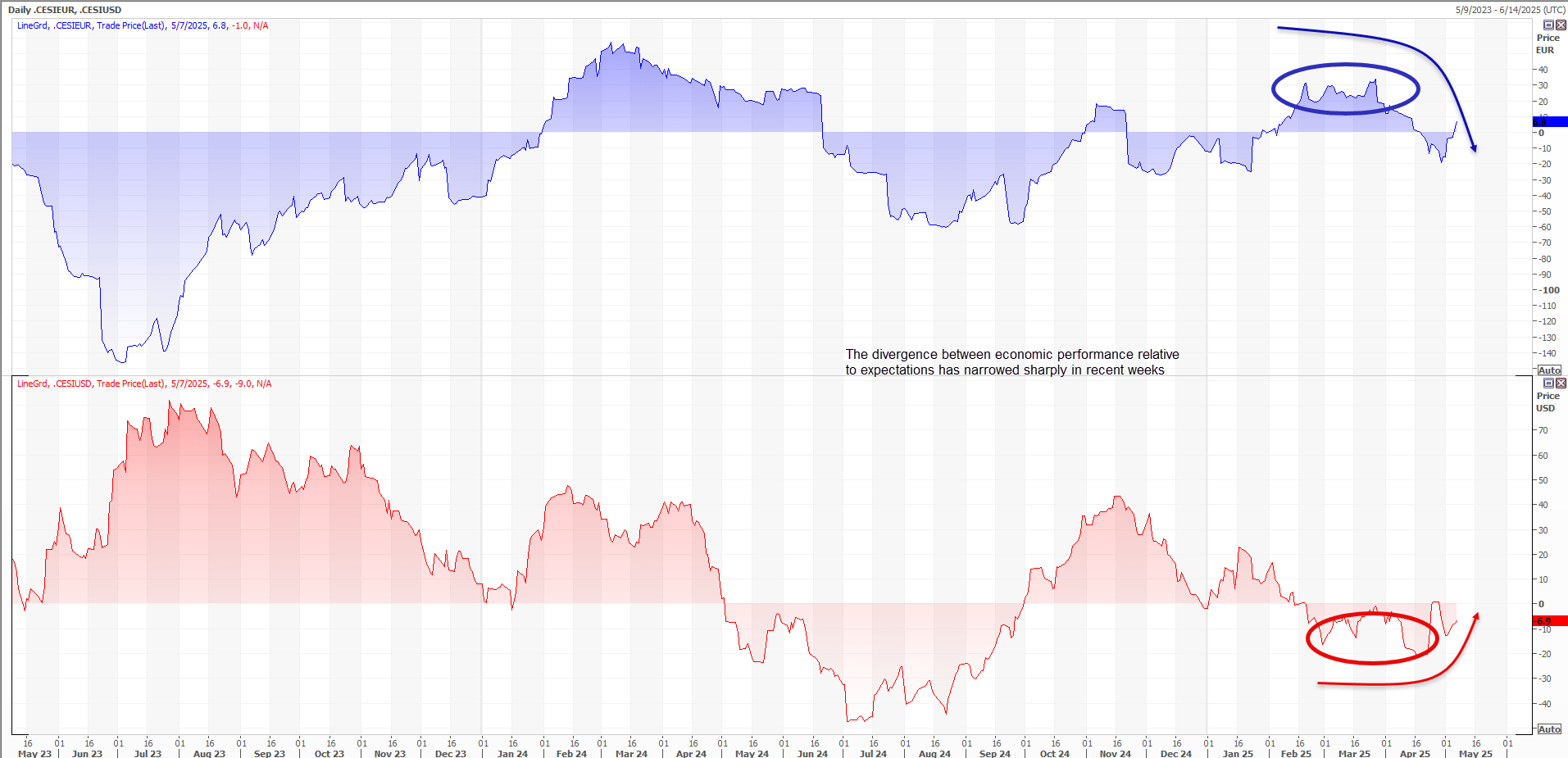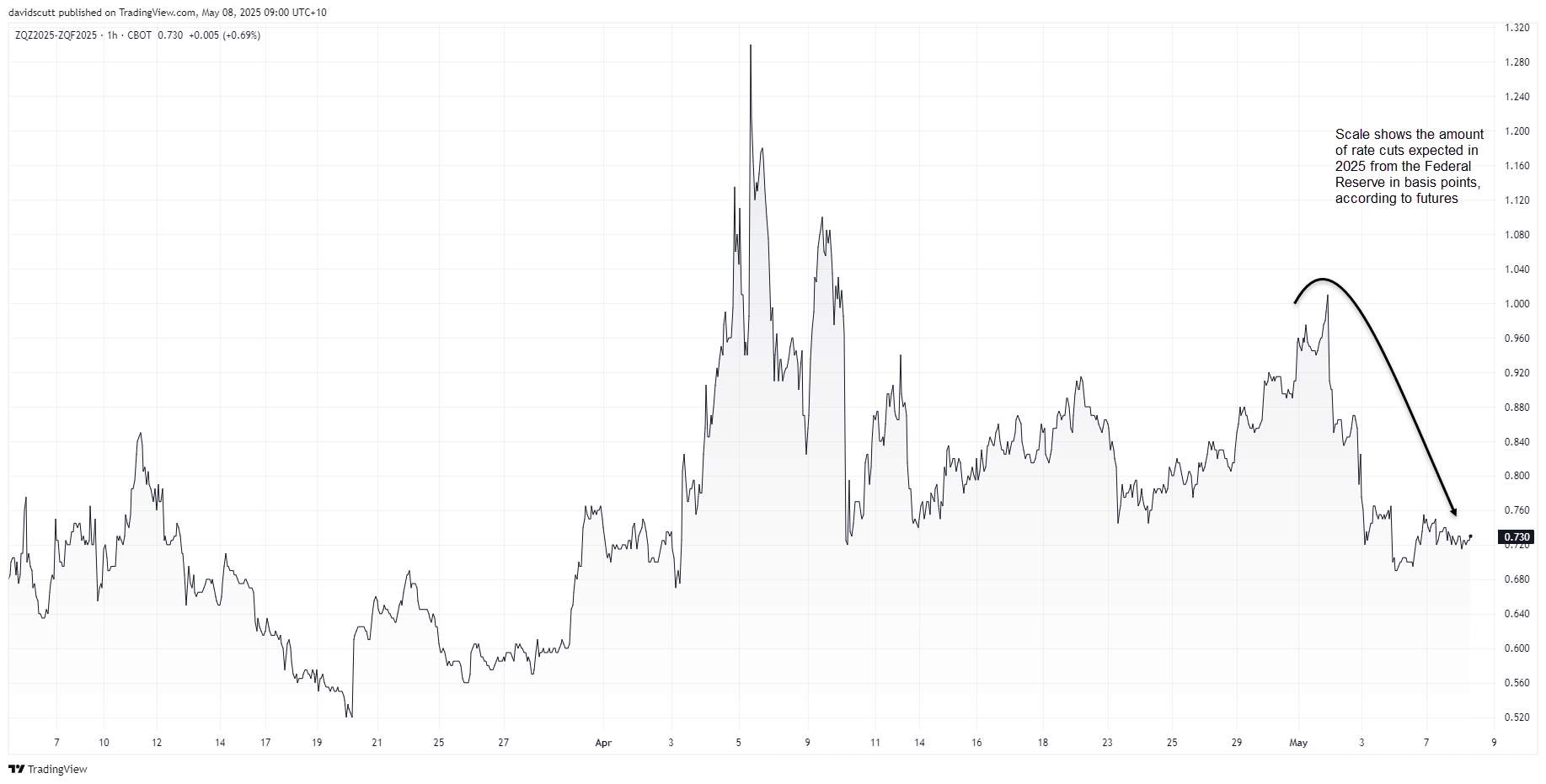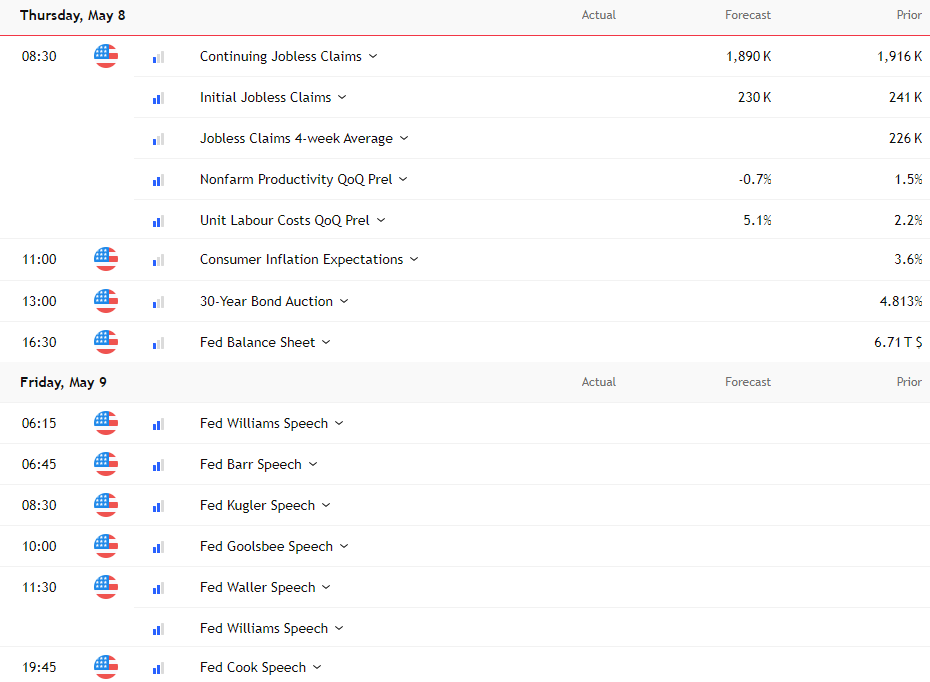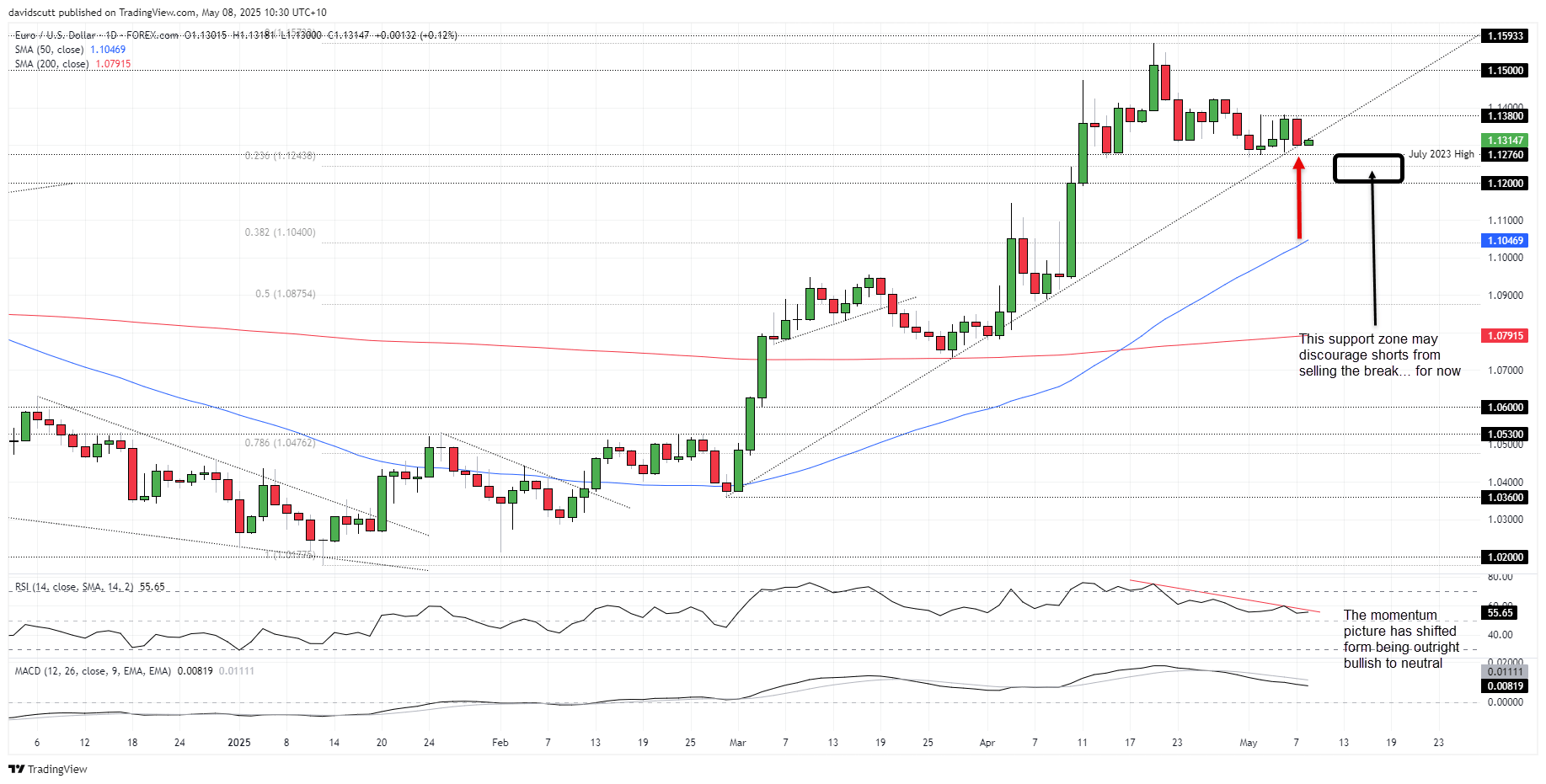Sana Biotechnology stock higher after Eric Jackson touts 100-bagger potential
- EUR/USD breaks February–April uptrend support
- Trade optimism revives demand for US assets
- Eurozone data surprise advantage has faded
- Key support at 1.1276–1.1200 now in play
- Fed speakers, jobless claims may guide next move
EUR/USD may have arrived at the start of a new trend, breaking the uptrend it had been trading in since late February. Assuming it sticks, the question now is whether it will be sideways or lower?
The key swing factor behind the US dollar’s recovery has undoubtedly been sentiment regarding trade negotiations between the US administration and other nations, with markets shifting from pricing peak pessimism in early April to something more akin to persistent optimism that the worst outcome will be avoided.
With relative economic data performance no longer providing tailwinds for the euro, any hint of a lasting trade truce in the near term may be enough to swing directional risks for EUR/USD lower.
Trade Deals Key for EUR/USD Direction
Whether you believe it or not, consensus across markets remains that trade tensions are far more negative for the US economy and markets than for other nations, be they developed or emerging. It means that we’ve seen an extreme period of headline-driven volatility, with escalating tensions driving capital away from the US, and vice versa when the opposite occurs.
You could see that firsthand on Tuesday when news broke that informal talks between the US and China would take place in Switzerland this weekend. The market reaction far exceeded that seen less than 24 hours later following the FOMC rate decision. The US dollar, Treasuries, and stock futures all immediately went bid.
While you shouldn’t be under the illusion that these talks will deliver something meaningful, you can’t escape the fact that—for now—trade tensions are on a de-escalation trend. Yes, there will be fits and starts, and plenty of disappointment, but that’s now the direction of travel. It also suggests further declines in the US dollar—beyond those already seen—may be far more difficult to achieve moving forward.
Talk of the dollar having embarked on a structural decline seems premature, just like the consensus view a few months ago that the euro was destined for a lengthy stint below parity. Narrative fitting immediately comes to mind. If trade deals are struck and the US administration shifts focus to tax cuts and deregulation, would you really want to be underweight the US? That’s a question to ponder.
Waning Data Edge Leaves EUR/USD Vulnerable
It’s not just trade negotiations that may be swinging in favour of the big dollar, but also relative economic performance. Citi’s economic surprise index is shown below, with euro area data in blue and the US in red. As a reminder, the index looks at how economic data prints relative to forecasts and then weights each release by market impact. A figure above zero indicates more positive surprises than not, and vice versa.
Source: Refinitiv
As opposed to earlier this year—when most European data was exceeding expectations while that in the US was undershooting—the divergence between the two economic heavyweights has narrowed noticeably in recent weeks. It should also be noted that positivity in Europe during Q1 may have been due to the demand being front-loaded ahead of formal tariff negotiations.
In the States, most of the negativity during the same period was driven by soft survey data rather than actual readings on activity. Hard data has been holding up well, even with elevated levels of uncertainty. That helps explain why expectations for Fed rate cuts in 2025 have been diminishing recently, with market pricing shifting from more than four cuts to fewer than three.
Source: TradingView
Obviously, that may not remain the case as we move further into the year, but the elevated risk of a US recession is now consensus—not some extreme tail risk. If a serious downturn were to be avoided, that could provide tailwinds for a dollar recovery.
In Europe, despite plenty of excitement about a German-led economic recovery underpinned by increased fiscal spending, the optics of Friedrich Merz failing to secure enough votes on the first attempt to become German Chancellor earlier this week served as a timely reminder that bureaucracy and political infighting often act as headwinds to European growth. If Merz struggled to get enough support to lead, will he be able to push through difficult reforms?
Hard Data Key for USD
While the questions posed above are focused on the medium term, right now, what matters most for EUR/USD traders—aside from tariff headlines—is the performance of the US economy, especially hard economic data. As the Fed made clear on Wednesday, while it remains ready to act if activity rolls over, until it does, there’s simply no need to adjust policy settings in either direction.
Source: TradingView (Times US EDT)
Over the remainder of this week, the cupboard is almost bare on that front, with only jobless claims carrying the potential to move markets. After a big increase the prior week, another similar outcome would stoke concern that labour market conditions are weakening sharply and likely work against the US dollar. But if we see a reversal—which has often been seen when big increases have occurred earlier in the cycle—it would likely do the opposite.
In the absence of a bearish outcome, markets are about to be bombarded by a wave of Fed speakers, all of whom are likely to be singing from the same neutral hymnbook as Chair Jerome Powell, given the policy rate vote was unanimous at the May FOMC meeting. That could provide further tailwinds for the dollar ahead of the trade meeting in Switzerland.
EUR/USD: Start of New Trend?
Source: TradingView
The EUR/USD break of uptrend support on Wednesday can be seen clearly on the daily chart, with the bearish engulfing candle warning of growing downside risk. However, sitting just above a support zone from 1.1276 down to 1.1200, it could be a hard slog for shorts near term without a definitive bullish US dollar catalyst.
Beneath 1.1200, initial downside levels of note include the April 3 high of 1.1145, along with the intersection of the 50-day moving average and the 38.2% Fib retracement of the January–April move around 1.1040.
Overhead, sellers at 1.1380 capped gains earlier this week, making that level the initial focus for longs. Above, 1.1425 is a minor resistance level, with a far tougher test awaiting any move back above 1.1500.
Momentum signals now screen as neutral rather than outright bullish, with MACD and RSI (14) still in positive territory but clearly trending lower. If this continues, it would amplify downside risks for price. For now, the best bet is to put greater emphasis on price action.
